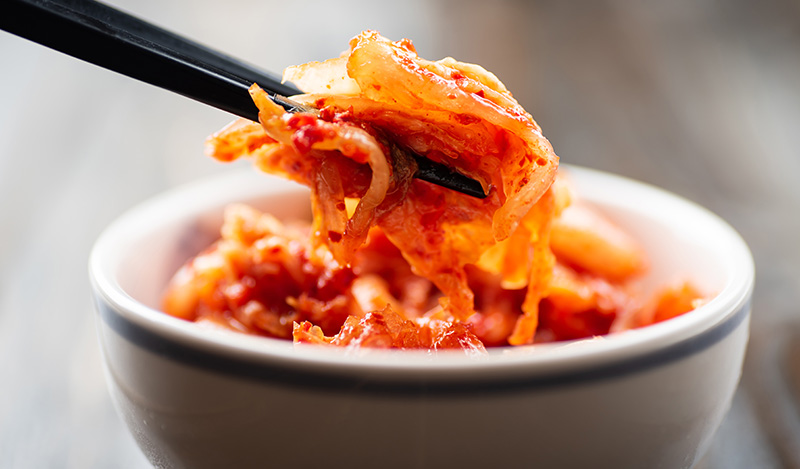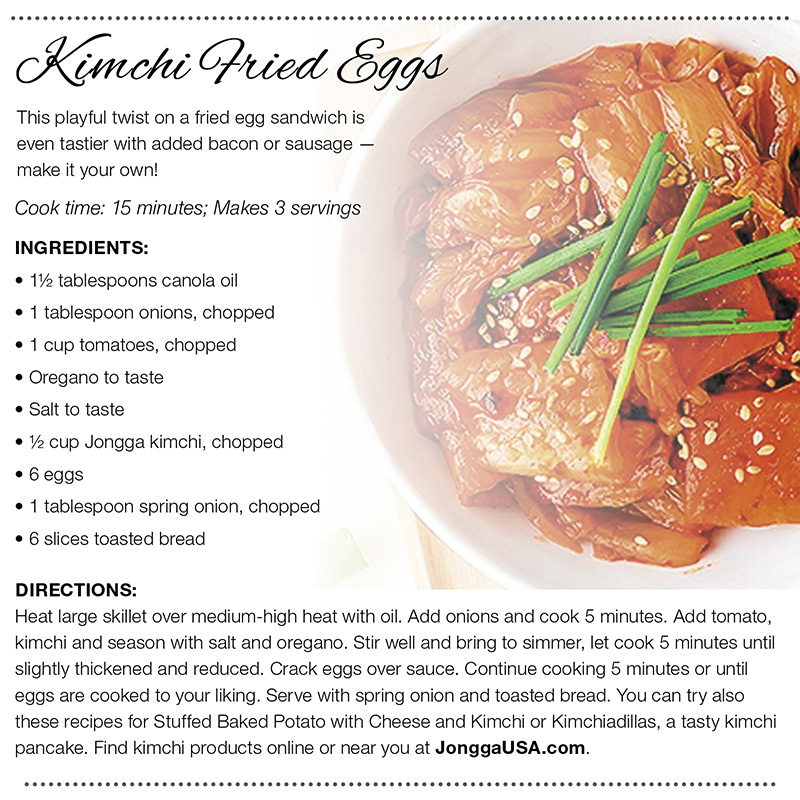Wonder Why Everything Korean Is Trending? Kimchi Is One Major Reason
December 8, 2021

(Brandpoint) — From BTS to Squid Game, Korean culture is seriously trending right now. And beyond K-Pop and K-Drama, much of the buzz comes from the unique flavors of Korean cuisine — with kimchi as the key. If you follow the latest cooking shows, recipes and up-and-coming restaurants, you’ll notice kimchi is everywhere, and for good reason — its refreshingly crunchy texture and spicy, tangy “umami” flavor appeals to many palates, and it’s also known to have health benefits. Kimchi’s popularity is skyrocketing at a time when Korean culture is hot and plant-based dishes are all the rage.
Just how much is kimchi trending? The Jongga brand of kimchi, which represents more than 60 percent of the kimchi exported from South Korea to the U.S., reports an increase in those exports of more than 20 percent in just the last three years.
“We’ve been amazed at the growing popularity of this traditional Korean staple,” said Brian Tompkins, vice president of sales and marketing, Daesang America, maker of Jongga kimchi. “And we’re delighted to share it with foodies and food lovers everywhere.”
Here’s a quick guide to kimchi, how you can use it — and how to try out this food phenomenon for yourself!
What’s in kimchi?
Cabbage (baechu, or napa cabbage) is the core of kimchi, but you can add other vegetables to make it your own. Vegetables often used in kimchi include:
• Radishes • Cucumber • Chives • Mustard greens • Perilla leaves
Beyond the veggies, it’s all about the seasonings, plus the fermentation process. Top seasonings used in kimchi include:
• Chili peppers, flakes and/or powder • Onions • Garlic • Ginger
Most cooks also add fish sauce and/or saeujeot (fermented shrimp), which you can skip if you’re going vegan.
How is kimchi made?
Kimchi’s unique flavor comes from the process of lacto-fermentation, which is how foods like sauerkraut and dill pickles are made. Fermented foods also are having a moment right now, due to growing interest in the health benefits from probiotics (which occur as a result of fermentation) for good gut health.
To make kimchi, cabbage is heavily layered in salt for a few hours. After the cabbage is rinsed, all the other ingredients are combined and packed into a container, then allowed to ferment for a few days — or much longer — at room temperature. Kimchi also can be eaten fresh, skipping the fermentation step.
Sound complicated and time consuming? While the kimchi-making process seems daunting, there’s a much easier way: Buy kimchi already made with traditional ingredients and in a variety of great flavor combinations.
For example, Jongga offers a wide array of kimchi products, including:
• Sliced Napa Cabbage Kimchi in spicy and mild flavors. The kimchi comes in small, easy-to-use pouches. This Kimchi complements many dishes, especially meats like steak or BBQ.
• Shelf Stable Vegan Kimchi is perfect to travel with, to enjoy as a side dish or use as a topping or ingredient in other dishes.
• Kimchi Ramen combines the great flavor of kimchi with tasty ramen noodles for a quick lunch or side, and comes in a package, bowl or cup for a convenient, portable meal.
Check out these and other kimchi products at JonggaUSA.com.
Recipes using kimchi
To incorporate the unique taste of kimchi in fun new recipes, try one of these easy-to-prep dishes.

